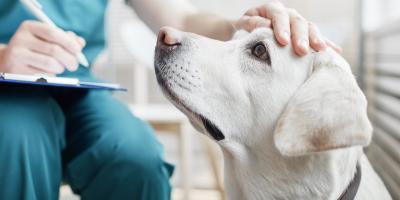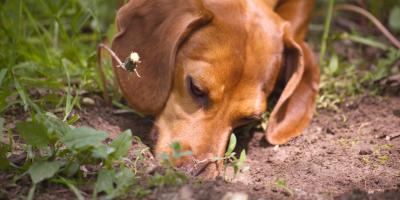How to Get Your Dog to Gain Weight


An ideal body condition is essential in supporting your dog’s health. While it’s more common for dogs to need to lose pounds to achieve a healthy weight, some dogs need to add a few.
A dog could be underweight for a variety of reasons. They may be recovering from an illness or injury, a recently adopted former stray or maybe they’re simply not food-motivated.
If you’re wondering how to get a dog to gain weight, don’t worry; with special care and nutrition, like dog food for weight gain, underweight dogs can get back to a healthy weight.
How Can You Tell if Your Dog is Underweight
The most obvious way to tell whether or not your dog is underweight is to look at the prominence of their bones. Can you see your dog’s ribs, spine and pelvic bones with no evidence of fat?
Do the bones at the base of their tail protrude? Does your dog have low energy? Has their coat lost its shine? If so, they could be underweight and in need of increased nourishment. Visit your veterinarian right away to determine whether there’s a medical cause for their low weight.
How to Help Increase Your Dog’s Weight
After your veterinarian confirms your dog’s low weight is not due to a medical problem, ask them how to safely help your dog gain weight. They may recommend adding more calories to their diet.
The best dog food to gain weight will be complete and balanced for their life stage, energy-dense, nutritionally balanced and include high levels of key nutrients, with plenty of calories and protein.
Also, look for a highly digestible dog food formula, which allows for easier absorption of nutrients. This can also help improve their overall health while supporting healthy weight gain.
Another way to help your dog gain weight may be giving them more opportunities to eat throughout the day. If you normally feed two large meals per day, try offering three or four smaller meals instead.
You can also try leaving the daily serving of dry food out all day, which allows your dog to eat whenever they’re hungry. This method works best with dogs with smaller appetites and in a single-dog household. Dogs who quickly gobble up their food could eat too much at once and experience digestive upset.
How to Help Picky Eaters Gain Weight
If your dog is a picky eater, try enticing them with a wet dog food topper. Add a scoop of wet or canned food to his dry kibble to boost flavor and moisture – and some extra calories. Be sure to follow the feeding guidelines on the packages unless your veterinarian advises otherwise. If they still refuse the food, you may need to switch to a different dog food formula to gain weight.
How Much Food Do Dogs Need to Gain Weight?
The amount of additional calories your dog needs will depend on the ideal body condition of their breed and their current health and weight. Your veterinarian may suggest feeding more than the recommended amount on the package until your dog reaches a healthy weight.
Once your dog achieves a healthy weight, follow your veterinarian’s guidance for scaling back on calories. You may need to simply scale back the quantity of the food or you may have to switch to a different formula to prevent them from gaining too much weight. You can continue feeding the nutrient dense dog food after your dog has achieved a healthy weight, as long as your dog is active, gets plenty of exercise and maintains their ideal body condition.
Less active dogs may need to switch back to a lower-calorie formula once they reach their ideal body condition. Continue to monitor your dog’s weight gain regularly and see your veterinarian if the weight loss persists.
Learn more about puppy and dog nutrition and much more from our pet experts on our Pet Expertise page.
Related articles

Reward Yourself with myPurina
Earn and redeem rewards for Purina products with the myPurina app.



